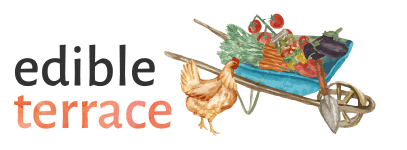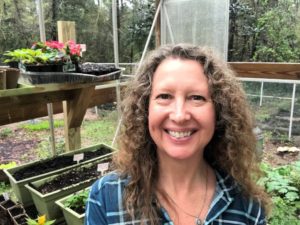Hey! By the way… TheEdibleTerrace is reader-supported. When you buy through links on our site, we may earn an affiliate commission and as an Amazon affiliate, we earn from qualifying purchases. Thanks in advance for your support!
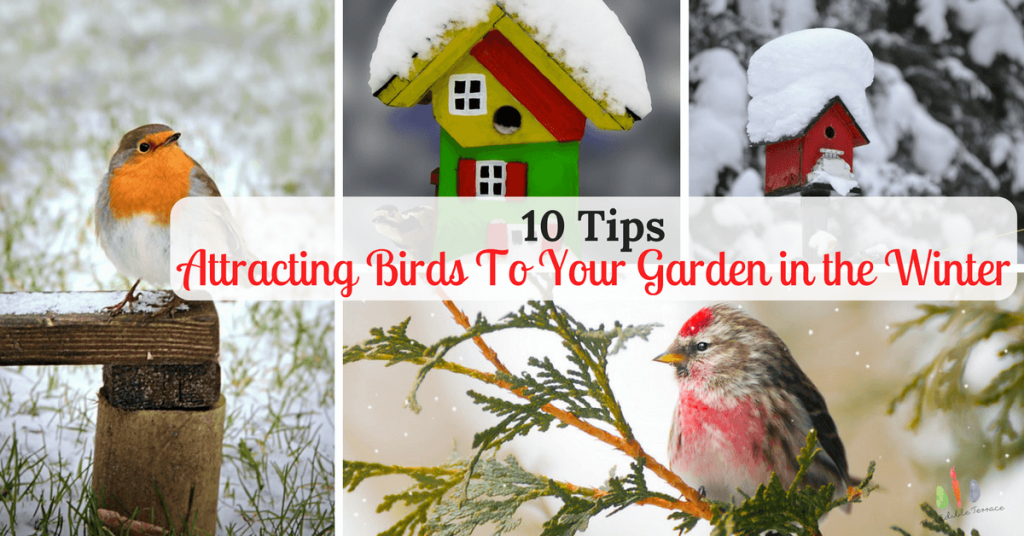
Cooler weather is right around the corner! Can you feel it? Are your bird friends preparing yet? Do you like the idea of attracting birds in winter to your own garden?
Me too! Let’s get started!
We have three primary areas of consideration: food, water and shelter (always address the basics, right?).
Feeding Garden Birds in Winter
Wrap Around Squirrel Baffle, 18-Inch – No need to remove bird feeder when mounting Since many birds molt in the fall, they require richer, higher calorie foods such as oil sunflower, Nyger seeds, peanut butter, peanuts, and suet. Providing a variety of food is a great idea too as birds tend to flock together during the colder months.
Since many birds molt in the fall, they require richer, higher calorie foods such as oil sunflower, Nyger seeds, peanut butter, peanuts, and suet. Providing a variety of food is a great idea too as birds tend to flock together during the colder months.
Do you love attracting hummingbirds? They will stick around until the hard frost if you keep their feeders filled.
To protect from the wind and cold, place your feeders on the east or southeast side of your house. Do you have a row of trees in your yard? That’s a great spot to place your feeders too. The trees also provide a safe perching spot for birds to survey the area and determine if it is safe or not.
Check your feeders often to ensure they’re full. This prevents your new bird friends from having to expend too much energy hunting for another food source.
Feeders with baffles are a good idea during this season. The baffles keep the seed dry and protected from the elements.
Best Plants to Attract Birds in Winter
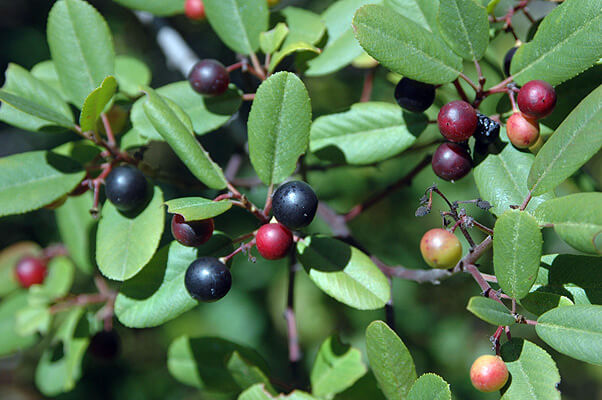
California Coffeeberry
Source: https://flic.kr/p/8SSZxE
The California coffeeberry (Rhamnus californica) shrub grows berries in early fall. The Brown dogwood (Cornus glabrata) grows its berries in late summer and fall. Additionally, this is a favorite nesting tree for small birds (shelter too!).
According to The Cornell Lab of Ornithology, you have multiple choices. They are broken out into four varieties: deciduous trees, conifer trees, vines, and shrubs.
Recommended Deciduous Trees are Mulberries, Serviceberries, Flowering Dogwood, Crabapples, and White Oak.
Recommended Coniferous Trees are Eastern red cedar and spruces.
Recommended vines are Wild grape and Virginia Creeper.
Recommended shrubs are:
- Northern bayberry
- Staghorn sumac
- Red-osier and gray dogwoods
- Nannyberry
- Winterberry (holly)
You can choose these plants based on the time of year you want them to fruit and/or the types of birds you want to attract.
Some winter fruiting plants are the Virginia Creeper, Northern Bayberry and Winterberry. These three also provide nesting sites and potential cover. (Cover is a very important element to provide in your backyard if you want your avian friends to stick around.)
P.S. Cornell offers a fun YardMap tool in which you enter your zip code and a list of resources such as native plants, nearby nurseries and locally sighted birds are offered up.
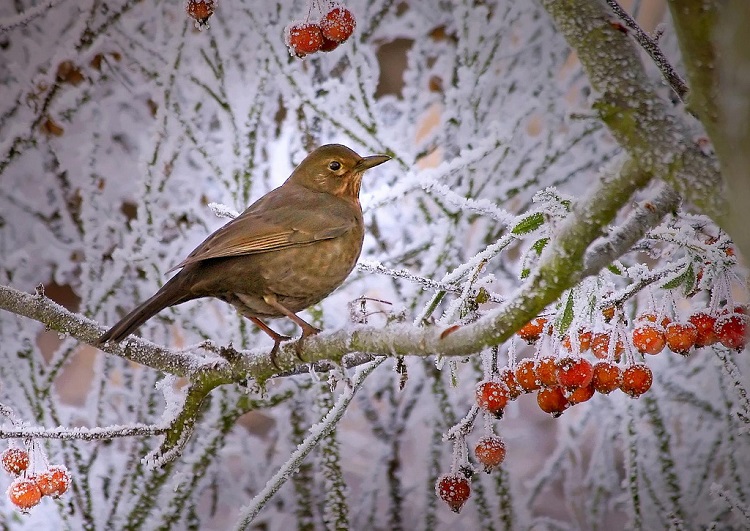
Ensure They Have Plenty of Clean Water
As you know, fresh (not frozen) water is very important. How about a heated bird bath? It would save you time and energy during those really cold months. No more chipping at the ice!
There are also bird bath motors that will keep the water in motion. Birds prefer moving water so this is also a good consideration.
Be diligent in switching out the water. This prevents mold and bacteria from spreading. (Same goes for your feeders!)
Songbird Essentials Heated Birdbath Deck Mounted Heated Bird Bath
Deck Mounted Heated Bird Bath Birds Choice Granite Bubbler
Birds Choice Granite Bubbler Birdbath De Icer Thermostat, 250-Watt
Birdbath De Icer Thermostat, 250-Watt
Make Sure You Have Available Shelter
Do you have roosting boxes? This is a good time to clean them out (removes the danger of parasitic bugs) and make room for the next family of birds that come your way. If not, consider putting a couple up.
Are you wondering what the difference is between a bird house and a roosting box? A roosting box is actually meant for roosting type birds such as woodpeckers, bluebirds, wrens, nuthatches, etc. They are larger than a typical bird house, have several perches inside them, and the opening is lower on the box (because hot air rises). This allows the birds to share body heat on those cold, winter nights.
Now, to refute a little of what I just said…if you are specifically trying to attract bluebirds, build or find a roosting box that does not have any perches. Bluebirds prefer to sleep on the floor in a big huddle. Additionally, in this case you will want the entrance to be higher so they are protected from not only the elements but also predators.
** Make sure you mount these boxes at least 10-ft high on a metal pole (predators such as cats, raccoons and weasels can climb up wood).
Free & Downloadable Winter Bird Roost Box Plans Here
Groups of coniferous trees and evergreen shrubs are also very attractive to birds searching for shelter from the bad weather.
Also, do not clean up your dead brush or leaf litter. Birds will make use of both-for eating and protection (think of all the bugs hanging out in those dead leaves!!!).
Hanging Birdhouse Roosting Pocket. Reed Grass and Cedar Roof. Woven Rope Roosting Pocket with Roof. Hand Made. 100% Fiber.
Woven Rope Roosting Pocket with Roof. Hand Made. 100% Fiber. Barn Roosting Pocket, Seagrass. Comes with Hook Attachment.
Barn Roosting Pocket, Seagrass. Comes with Hook Attachment. Winter Roost Box. Easily Converted to a Nest Box in the Spring.
Winter Roost Box. Easily Converted to a Nest Box in the Spring.
Attracting birds in winter is totally doable. By preparing in advance, your backyard can be a winter haven for many of them this season! Check out here to learn a little more about bird migration.
Recommended articles:
